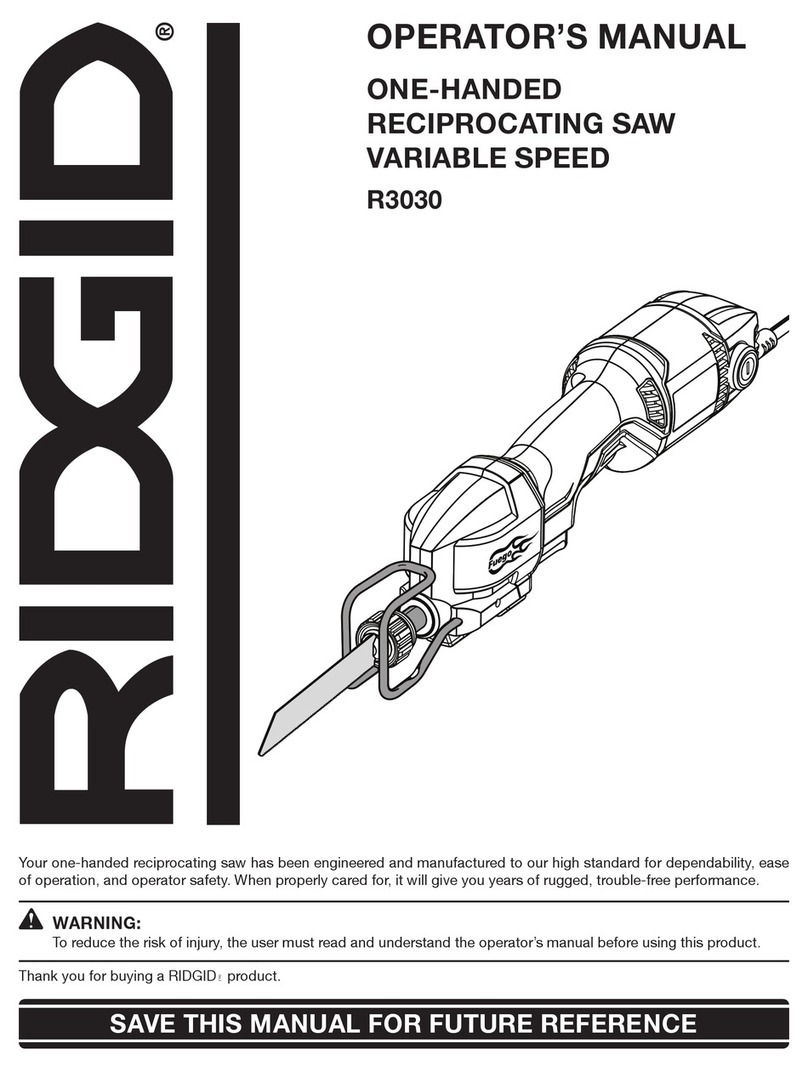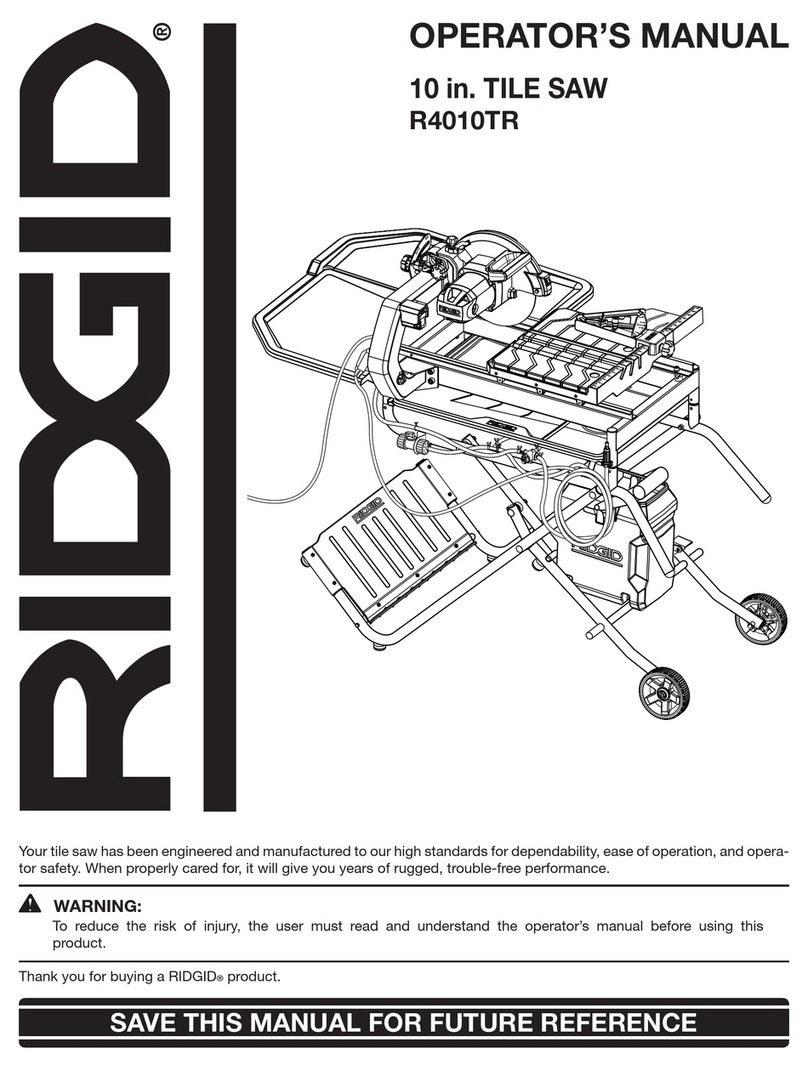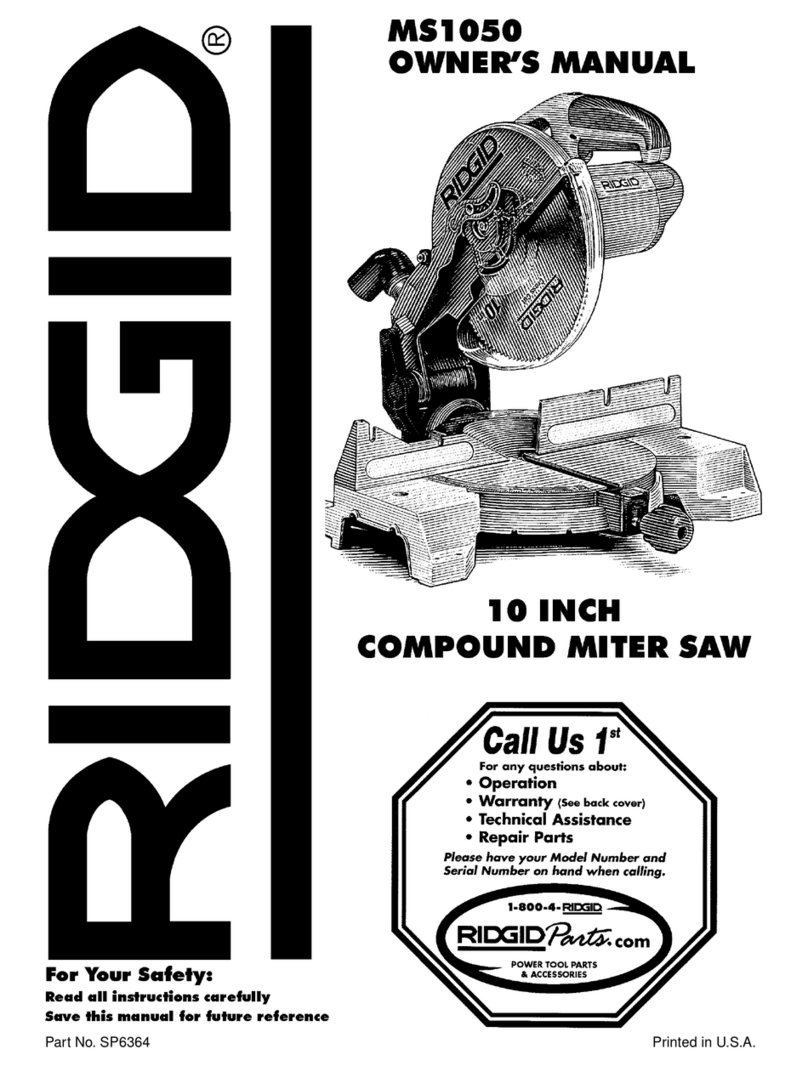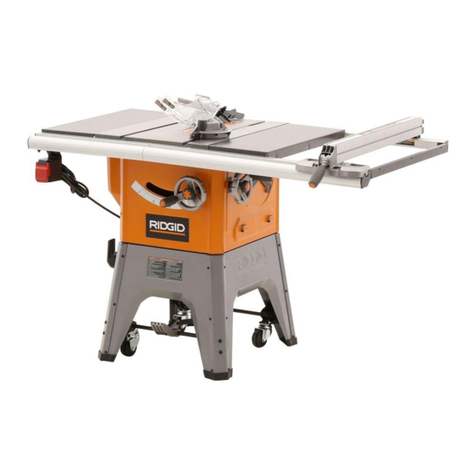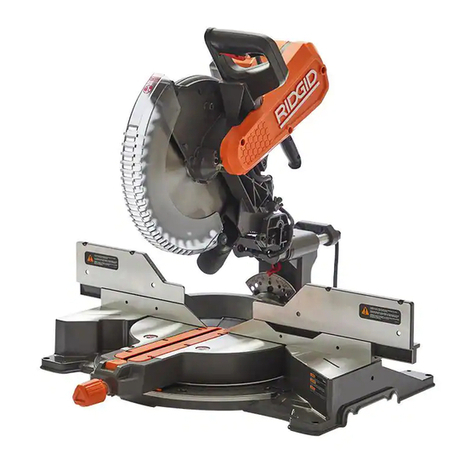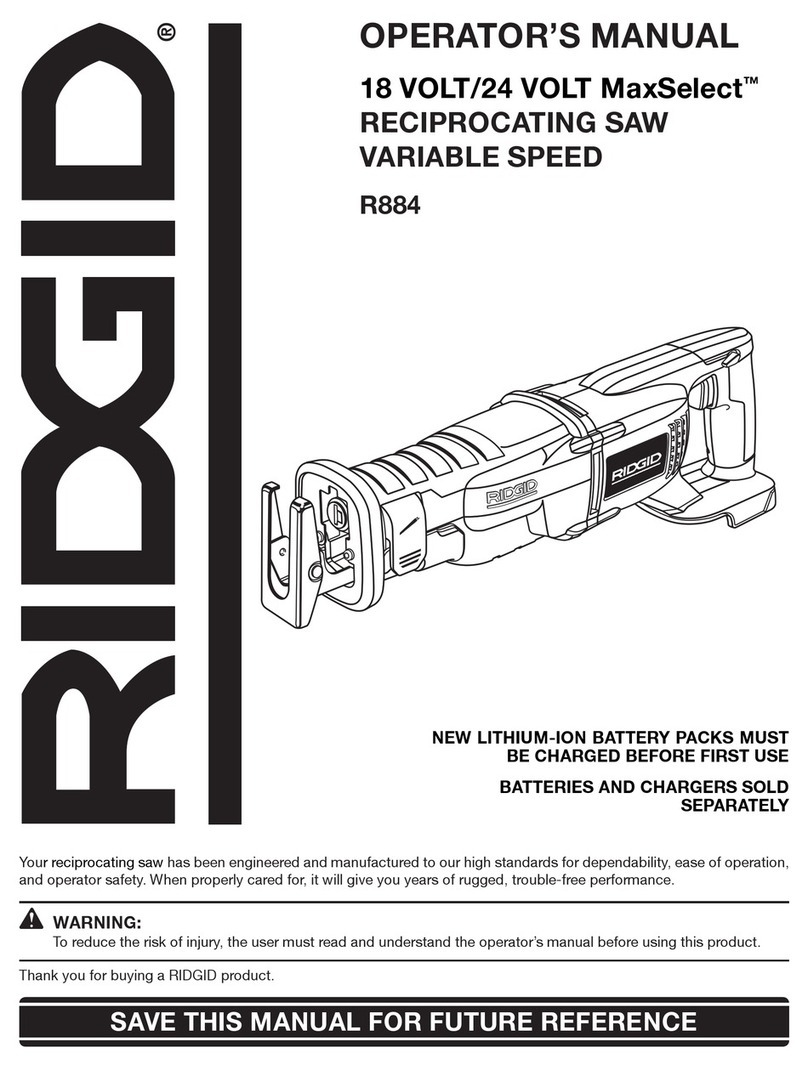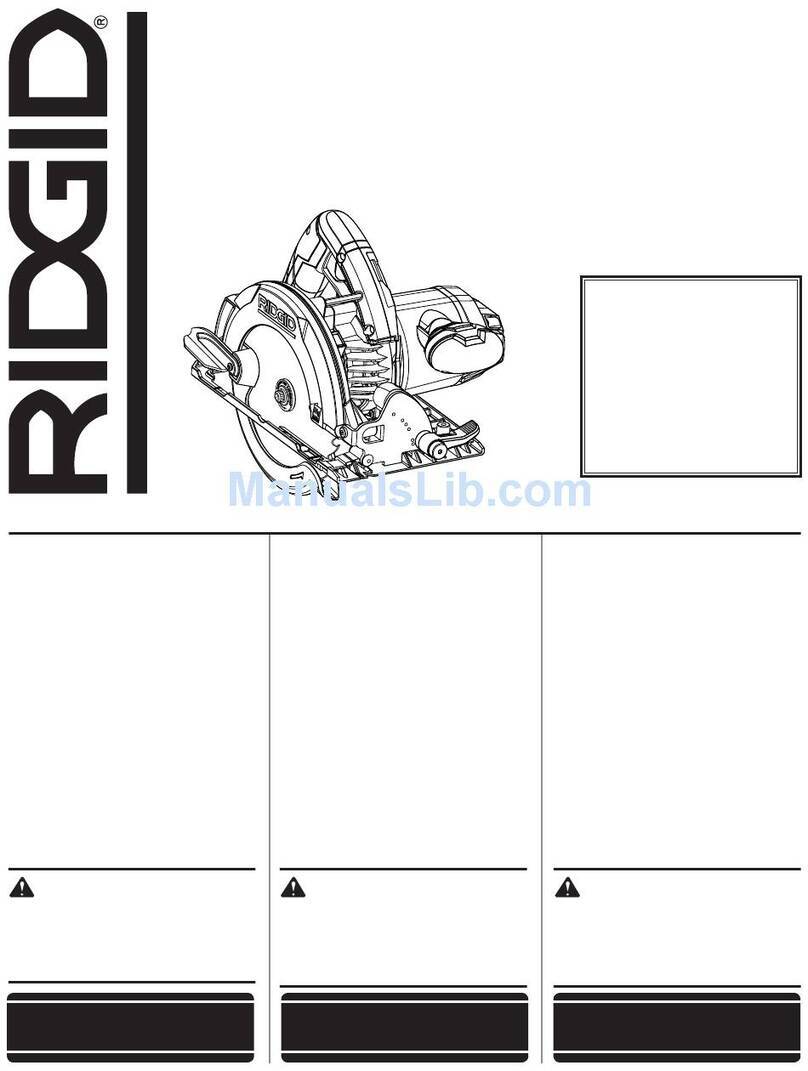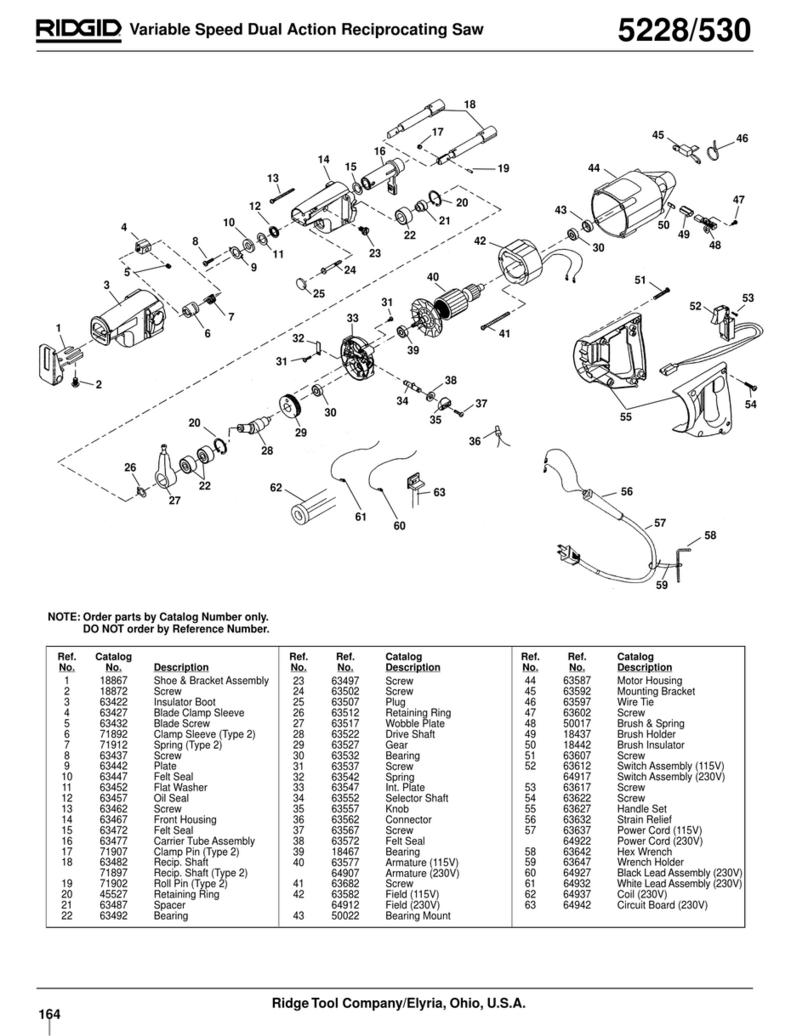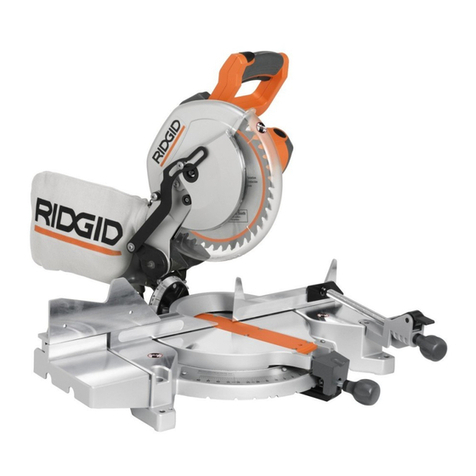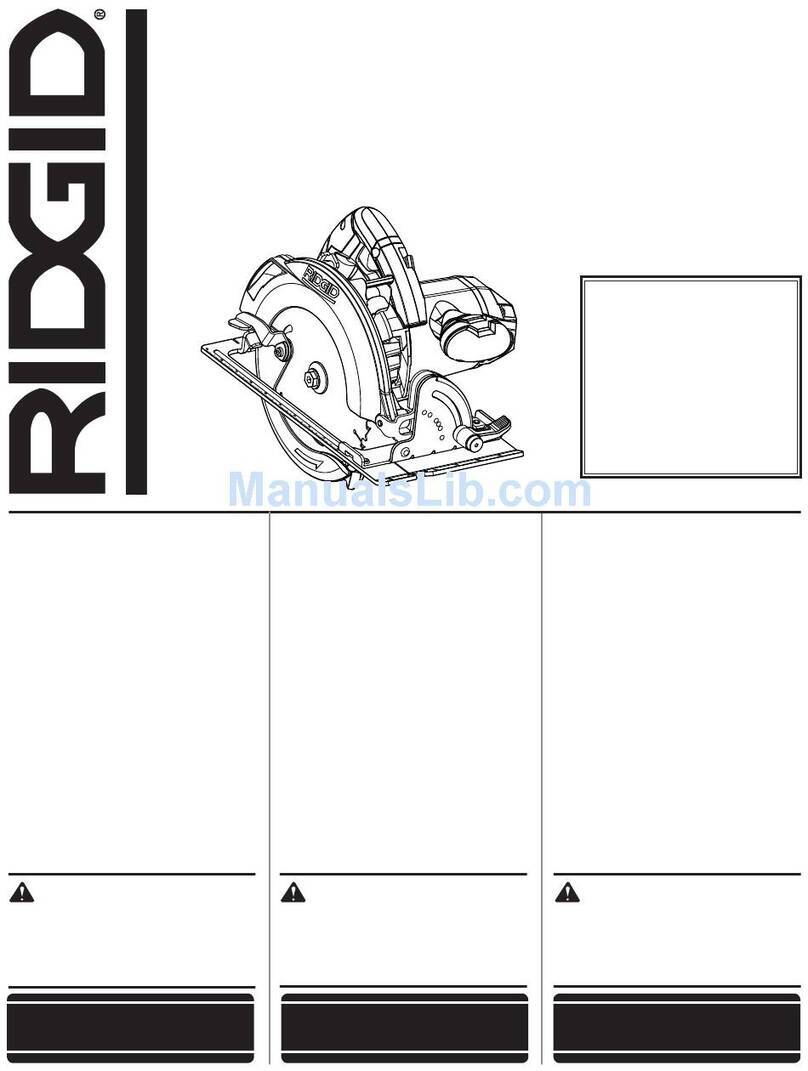
5 - English
Check lower guard for proper closing before each
use. Do not operate the saw if lower guard does not
move freely and close instantly. Never clamp or tie the
lowerguardintotheopenposition.Ifsawisaccidentally
dropped, lower guard may be bent. Raise the lower guard
with the retracting handle and make sure it moves freely
and does not touch the blade or any other part, in all
angles and depths of cut.
Check the operation of the lower guard spring. If the
guard and the spring are not operating properly, they
must be serviced before use. Lower guard may operate
sluggishly due to damaged parts, gummy deposits, or a
build-up of debris.
Lower guard should be retracted manually only for
special cuts, such as “plunge cuts” and “compound
cuts.” Raise lower guard by retracting handle and as
soon as blade enters the material, the lower guard
must be released. For all other sawing, the lower guard
should operate automatically.
Always observe that the lower guard is covering the
blade before placing saw down on bench or floor. An
unprotected, coasting blade will cause the saw to walk
backwards, cutting whatever is in its path. Be aware
of the time it takes for the blade to stop after switch is
released.
ADDITIONAL SAFETY RULES
Position cutting station outdoors in a well-ventilated
area. Make sure wind will blow dust away from operator
and others in working area.
Neverdrysweeptoremovesawdust.Always have dust-
reducing circular saw attached to a HEPA vacuum.
Use of this tool can generate and/or disburse dust,
which may cause serious and permanent respiratory
or other injury. Always use NIOSH/OSHA approved
respiratory protection appropriate for the dust exposure.
Direct particles away from face and body.
Keep motor air vent clean. The tool’s motor air vent
must be kept clean so that air can freely flow at all times.
Check for dust build-up frequently.
Know your power tool. Read operator’s manual
carefully. Learn its applications and limitations, as well
as the specific potential hazards related to this tool.
Following this rule will reduce the risk of electric shock,
fire, or serious injury.
Always wear safety glasses. Everyday eyeglasses
have only impact-resistant lenses; they are NOT safety
glasses. Following this rule will reduce the risk of serious
personal injury.
CIRCULAR SAW SAFETY WARNINGS AND INSTRUCTIONS
Protect your lungs. Wear a face or dust mask if the
operation is dusty. Following this rule will reduce the risk
of serious personal injury.
Protect your hearing. Wear hearing protection during
extended periods of operation. Following this rule will
reduce the risk of serious personal injury.
Inspect tool cords periodically and, if damaged, have
repaired at your nearest authorized service center.
Constantly stay aware of cord location. Following this
rule will reduce the risk of electric shock or fire.
Check damaged parts. Before further use of the
tool, a guard or other part that is damaged should
be carefully checked to determine that it will operate
properly and perform its intended function. Check for
alignment of moving parts, binding of moving parts,
breakage of parts, mounting, and any other conditions
that may affect its operation. A guard or other part that
is damaged should be properly repaired or replaced
by an authorized service center. Following this rule will
reduce the risk of shock, fire, or serious injury.
Make sure your extension cord is in good condition.
When using an extension cord, be sure to use one
heavy enough to carry the current your product will
draw. A wire gauge size (A.W.G.) of at least 14 is
recommended for an extension cord 50 feet or less in
length. A cord exceeding 100 feet is not recommended.
If in doubt, use the next heavier gauge. The smaller
the gauge number, the heavier the cord. An undersized
cord will cause a drop in line voltage resulting in loss of
power and overheating.
Inspect for and remove all fasteners from workpiece
before using this tool. Following this rule will reduce the
risk of serious personal injury.
Do not wear loose clothing or jewellery. Contain long
hair. Loose clothes, jewellery, or long hair can be drawn
into air vents.
Do not use on a ladder or unstable support. Stable
footing on a solid surface enables better control of the
tool in unexpected situations.
Ifthe power supply cordisdamaged, itmustbereplaced
only by the manufacturer or by an authorized service
center to avoid risk.
Save these instructions. Refer to them frequently and
use them to instruct others who may use this product. If
you loan someone this product, loan them these instruc-
tions also.

